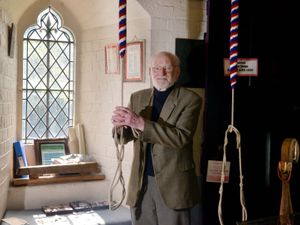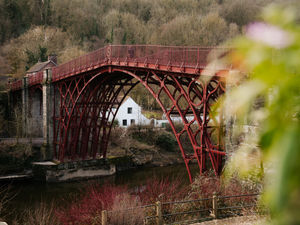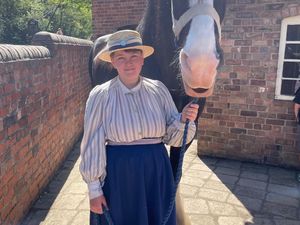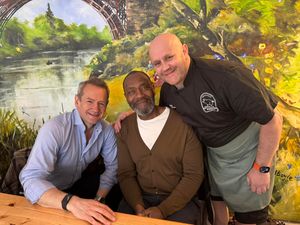Rare albino badger is all white in the Telford night
[gallery] A rare visitor has been caught on camera as he comes for his regular night-time meal in a Telford garden.

Householder Lesley Sinclair has been putting out food for the wildlife for about six months.
But only after getting a special camera did she notice that one of her regulars could be an albino badger – a very rare phenomenon.
Mrs Sinclair, of Horsehay, said: "We used to have two foxes come in.
They'd jump the fence and get into the garden.
"I've always fed the birds but after I noticed the foxes I began to feed them as well.
"Then a badger started appearing. I don't know if the badgers scared the foxes away but now it's just badgers.
"They all come in at different times throughout the night. Some come at 9pm, 10pm even 2am.
"I thought it might be the same badger but it's actually not.
"I bought a wildlife camera in February and it has picked up some great pictures of them.
"There was one picture with two striped badgers in it and that's how we noticed the albino.
There's definitely at least three badgers that come, as we've seen at least two striped badgers in the garden at the same time, and the albino.
"I feed them every single night, I have to put food out now because they're used to it.
"I don't know what I'm going to do when I'm on holiday."
Albino badgers are particularly rare, with white fur and pink eyes, but there are also erythristic badgers, which are a sandy colour and have a known population in Telford.
John Hughes, development manager at Shropshire Wildlife Trust, said: "True albinos are very rare, though there is another effect that can occur.
"These badgers are called erythristic and it makes them have a sort of sandy colouration.
"While albinos are really rare, these erythristic often appear in little populations, as if there is a small gene pool where a significant proportion of the group will be this sandy colour.
"There was a known population of this kind of badger near Jiggers Bank in Ironbridge which is not a million miles away from Horsehay, so this could easily be part of that population, which I strongly suspect.
"It is no bad thing at all to feed badgers. The thing is that they will eat anything and once they find a good source of food they will exploit it, so it is very likely that they will continue going into Mrs Sinclair's garden.
"If it's easier to get than digging up worms they will certainly take advantage of it, although they will still be getting their own food at the same time.
"It is a wonderful thing to see badgers in your garden as they are really social animals. They live in social groups, in setts, and will probably be going into the garden as a social group or family. Badgers will play, fight and squabble – just like our own families."
Mrs Sinclair, 51, who lives with husband Ian, 59, leaves out a mixture of bread, dog biscuits and scraps for the animals and said she has now found a real interest in them, particularly since she has been able to see them from indoors using her wildlife camera.
She has taken to researching the animals on the internet to learn more about their behaviour.
She is now so passionate about her garden visitors that when the panel they used to get through needed replacing, she had a small hole put into it to allow the badgers to keep getting in.
She said: "It's mad, I know, but I just love the wildlife."





